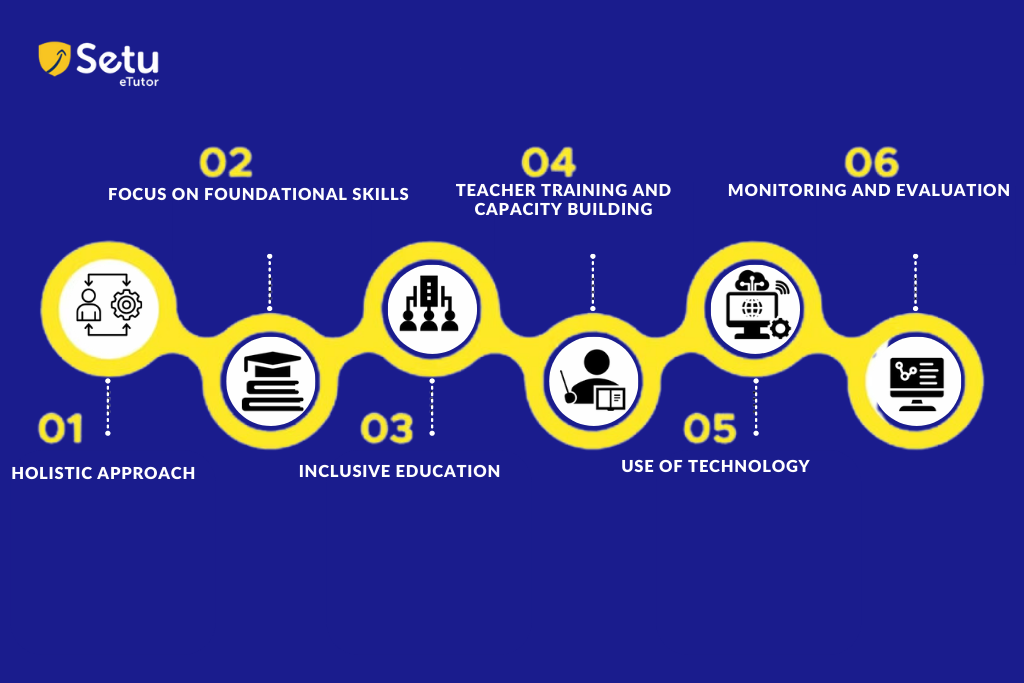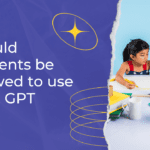The Union Budget for 2018-19 proposed treating school education holistically, eliminating segmentation, and considering it a unified system from pre-nursery to Class 12. This approach aimed to provide students with a comprehensive, consistent, and seamless educational experience throughout their schooling journey. The government intended to provide students with a more comprehensive and consistent learning experience by treating school education as a continuum.
In this blog article we are going to explore the education excellence that can be made with Samagra Shiksha and its sync with NEP 2020 pedagogical structure.
Introducing Samagra Shiksha Scheme:
The Samagra Shiksha scheme is a comprehensive program covering the entire spectrum of school education, from pre-school to class XII. The program was launched in 2018 by merging three existing schemes: Sarva Shiksha Abhiyan (SSA), Rashtriya Madhyamik Shiksha Abhiyan (RMSA), and Teacher Education (TE).
It is designed to create a seamless and integrated educational system in line with the Sustainable Development Goal for Education (SDG-4). The scheme supports the implementation of the Right of Children to Free and Compulsory Education Act, 2009, and aligns with the recommendations of the National Education Policy (NEP) 2020.
Inclusive Education for Millions:
- The Samagra Shiksha scheme extends its reach to a wide network of Quality educational institutions, encompassing 1.16 million schools, serving over 156 million students, and engaging 5.7 million government and aided school teachers from pre-primary to senior secondary levels.
- This comprehensive initiative involves active participation and collaboration of all stakeholders within the school ecosystem.
- Teachers, teacher educators, students, parents, community members, school management committees, SCERTs, DIETs, BITEs, block resource persons, cluster resource persons, and volunteers all contribute to the mission of providing inclusive, equitable, and quality education.
Objectives of Samagra Shiksha:
The primary objectives of Samagra Shiksha are as follows:

- Support states and union territories in implementing the National Education Policy 2020 recommendations.
- Assist states in effectively implementing the Right of Children to Free and Compulsory Education (RTE) Act, 2009.
- Focus on providing quality Early Childhood Care and Education(ECCE).
- Emphasize the importance of foundational literacy and numeracy skills for all students.
- Promote a curriculum and pedagogy that is holistic, integrated, inclusive, and activity-based, fostering 21st-century skills among students.
- Ensure the provision of quality education and improve learning outcomes for students.
- Address social and gender disparities in school education and work to bridge these gaps.
- Promote equity and inclusion at all levels of school education, ensuring equal opportunities for all students.
- Strengthen State Councils for Educational Research and Training (SCERTs) and District Institutes for Education and Training (DIET) as key agencies for teacher training.
- Ensure a safe, secure, and conducive learning environment in schools, with adherence to minimum standards.
- Promote rationalization of education, integrating practical skills training into the curriculum.
Samagra Shiksha in Sync with NEP 2020 Pedagogical Structure:
Unveiling a new era in school education, Samagra Shiksha embraces the progressive 5+3+3+4 structure. This transformative approach encompasses three years in Anganwadi/pre-school and twelve years in school, ensuring a comprehensive learning journey.
At the Foundational stage (5), Samagra Shiksha adopts a multilevel approach, fostering learning through play and activity-based methods. Students are encouraged to explore and engage actively in their educational journey, laying a strong foundation for future growth.
In the Preparatory Stage (3), Samagra Shiksha promotes an interactive and immersive classroom environment, focusing on play, discovery, and activity-based learning. Students are encouraged to develop their curiosity, creativity, and problem-solving skills, Nurturing Student for learning.
Moving forward to the Middle Stage (3), Samagra Shiksha emphasizes experiential learning across various subjects such as sciences, mathematics, arts, social sciences, and humanities. Students actively participate in hands-on activities, fostering a deeper understanding and practical application of knowledge.
As students enter the Secondary Stage (4), Samagra Shiksha encourages multidisciplinary studies, fostering critical thinking, flexibility, and greater autonomy in subject selection. Students are empowered to make informed choices, paving the way for their interests and future aspirations.
Samagra Shiksha strives to create a dynamic, engaging, and student-centered learning environment through this innovative pedagogical and curricular structure. It aims to equip learners with the necessary skills, knowledge, and values to excel in the 21st century and become lifelong learners.
Features of the Samagra Shiksha:
The major features of Samagra Shiksha based on the recommendations of the National Education Policy 2020 are:
- Holistic Approach: Samagra Shiksha takes a holistic approach to education by considering the entire spectrum of school education, from pre-school to class XII, as a continuum. It aims to provide a seamless and integrated learning experience for students.
2. Inclusive Education: The scheme emphasizes inclusive education, ensuring equal access to quality education for all children, including those from disadvantaged backgrounds, marginalized communities, and children with disabilities.
3. Focus on Foundational Skills: Samagra Shiksha strongly emphasizes foundational skills such as literacy and numeracy. It aims to ensure that every child acquires these essential skills during the early years of education.
4. Teacher Training and Capacity Building: scheme recognizes the critical role of teachers in providing quality education. It focuses on teacher training and capacity-building programs to enhance pedagogical skills and promote effective teaching practices.
5. Quality Infrastructure: Samagra Shiksha aims to improve the infrastructure of schools to create a safe, conducive, and stimulating learning environment. It includes provisions for clean and functional classrooms, libraries, laboratories, and other necessary facilities.
6. Use of Technology: The scheme encourages technology integration in education to enhance teaching and learning processes. It promotes using digital tools and resources to support innovative pedagogical approaches and improve learning outcomes.

7. Vocational Education: Samagra Shiksha recognizes the importance of vocational education and aims to promote its integration into the school curriculum. It focuses on equipping students with practical skills relevant to the demands of the job market.
8. Community Participation: The scheme promotes the active involvement of parents, community members, and other stakeholders in the education process. It encourages the formation of School Management Committees (SMCs) to ensure community participation in decision-making and monitoring of school activities.
9.Monitoring and Evaluation: Samagra Shiksha emphasizes the importance of monitoring and evaluation to assess the effectiveness of interventions and programs. It promotes using data-driven approaches to track progress, identify areas for improvement, and ensure accountability.
10.Focus on quality education:
- Samagra Shiksha prioritizes quality education by focusing on teachers and technology.
- It enhances the capacity building of teachers and school heads while strengthening Teacher Education Institutions like SCERTs and DIETs.
- SCERTs become the nodal institution for in-service and pre-service teacher training, ensuring dynamic and need-based programs.
- The scheme supports the Rashtriya Avishkar Abhiyan for Science and Maths learning and the Padhe Bharat Badhe Bharat Programme for foundational skills at the primary level.
- It also provides library grants ranging from Rs. 5000 to Rs. 20000 to every school.
- These initiatives create an environment that nurtures holistic development and empowers students with essential skills.
11. Focus on Girl Education:
- Upgradation of Kasturba Gandhi Balika Vidyalayas (KGBVs): KGBVs will be upgraded from Class 6-8 to Class 6-12, providing ample educational opportunities for girls.
- Self-defense Training: Girls from the upper primary to the senior secondary stage will receive self-defense training, empowering them with essential skills for their safety and well-being.
- Strengthened Commitment to ‘Beti Bachao Beti Padhao’: A reinforced dedication to the ‘Beti Bachao Beti Padhao’ initiative, emphasizing the importance of saving and educating the girl child, promoting gender equality and women’s empowerment.
12. Focus on inclusion under RTE Act:
As per the RTE Act following allocations are made such as Rs. 600 for uniforms, Rs. 250/400 for textbooks, and energized textbooks introduced. Increased support for Children with Special Needs and stipend for Girls with Special Needs.
13. Focus on Sports and Physical Education:
- Sports Integration in Curriculum.
- The provision of Sports Equipment costs Rs. 5000 for Primary Schools, Rs. 10,000 for upper primary schools, and Rs. 25,000 for secondary and senior secondary schools.
- This initiative aims to promote and highlight the significance of sports in education.
How does SETU Support the Samagra Shiksha Schema?
- SETU, an AI-assisted platform in alignment with the new academic structure and NEP 2020 vision, also adheres to the Samagra Shiksha schema.
- Our platform introduces a 360-degree progress card that exhibits the progress and uniqueness of each learner in the cognitive, affective, and psychomotor domains.
- This 360-degree assessment will give a holistic view of the student’s development, showcasing their academic, emotional, and physical growth.
- Our progress card report will go beyond traditional grading systems, emphasizing each learner’s individual strengths and areas of improvement.
- By incorporating a range of formative assessments and feedback mechanisms, we aim to provide a more inclusive and personalized approach to evaluating student progress, as suggested and recommended in Samagra Shiksha.
- We also support student learning through the course materials for every chapter, practice and prepare tests, summary notes, videos for each topic. So that students can revise and be prepared for the next class.
Wrapping Up:
Samagra Shiksha is a transformative scheme that focuses on the Holistic Development In Early Childhood and improving the education system in India. With its emphasis on quality education, inclusive curriculum, teacher capacity building, and technological integration, Samagra Shiksha aims to provide equitable and accessible education to all learners.
By aligning with new education policy 2023 and incorporating innovative approaches, the scheme seeks to address the diverse needs of students, bridge social and gender gaps, and foster a conducive learning environment. Through its comprehensive initiatives and continuous efforts towards educational reform, Samagra Shiksha envisions a future where every child receives a quality education, empowering them to thrive and contribute to society. SETU ,an AI-assisted platform is on mission and vision to support the Samagra shiksha scheme in holistic development of the students.
Contact us here to get more information on how our platform SETU aligns with NEP 2020 and Samagra Shiksha scheme.











Leave a reply